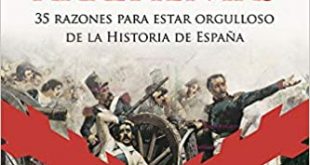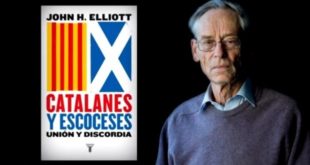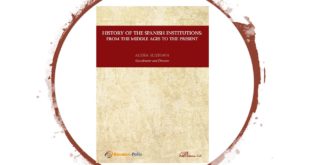— y Francisco Morente (editores). Fascismo en España. El Viejo Topo, 2005. Pp. 454.
Homenaje a José Antonio en su centenario (1903-2003). Coord. Luis Buceta Facorro, Gonzalo Cerezo Barredo, Eduardo Navarro Álvarez. Plataforma 2003, 2003. Pp. 978.
Ramiro Ledesma Ramos. Obras completas. Fundación Ramiro Ledesma Ramos-Ediciones Nueva República, 2004. 4 vols. Pp. 1.638.
Ismael Saz Campos. España contra España. Los nacionalismos franquistas. Marcial Pons, 2003. Pp. 441.
— Fascismo y franquismo. Universitat de València, 2004. Pp. 291.
¿Fascismo en España? was the ironic title of one of the two brief books published by Ramiro Ledesma Ramos after his expulsion from the Falange in 1935. The other, Discurso a las juventudes de España, was republished by the Franco regime, but
¿Fascismoen España? was not, for its sardonic reflections on the first phase of the Falange and on the personality and political contradictions of José Antonio Primo de Rivera provided the best critical account—however personal and one-sided—that would appear on the origins of the Spanish fascist movement for years.
If Ernesto Giménez Caballero was the first important Spanish writer and intellectual to try to publicize the ideas of Italian Fascism in Spain, Ramiro Ledesma became, at the tender age of 25, the first fully-formed native Spanish fascist intellectual and the first to initiate fascism as a political movement in Spain in 1931. Ledesma created the initial doctrines later incorporated by the Falange, and also coined most of the original slogans of the movement before José Antonio Primo de Rivera and his associates founded Falan- ge Española in October 1933. The tiny Juntas de Ofensiva Nacional-Sindicalista (JONS), led by Ledesma and Onésimo Redondo, had finally begun to grow during 1933, but could not match resources with the Falange, and soon merged with it in January 1934, Ledesma forming part of a new Falangist ruling triumvirate. This arrangement, however, would last scarcely more than a year, until February 1935, when Ledesma’s attempt to form a schism that would dominate fascist politics in Spain brought his abrupt expulsion by José Antonio. Ledesma spent the final year and a half before the Civil War in political isola- tion, making new efforts to propagate his ideas before being arrested and executed during the early phase of the war itself. In the early fascistic phase of the Franco regime, Ledesma, as a party schismatic, was given only brief attention, being the subject of a biographical essay by Emiliano Aguado in 1941. His central role, particularly in the formulation of Falangist doctrine, was never fully recognized.
What were the differences between Ledesma and José Antonio? Personal rivalry
was important, but the role of ideas and political strategy even more central. José Anton- io was an affluent aristocrat, Ledesma what might be termed a «proletarian intellectual» from the lower middle class. Ledesma was a precocious writer and intellectual who had published articles in a provincial newspaper at the age of fourteen and had written three novels before the age of twenty, only one of which appeared in print during his lifetime. By his early twenties he had mastered complex aspects of technical philosophy, trans- lating the extremely difficult Einführung in die philosophischen Grundlagen der Mathe-matik, by Walter Brant and Marie Deutschbein, for the editorial Revista de Occidente in 1930, as well as publishing brief philosophical studies of his own on a professional level. Of his greater precocity and intellectual sophistication, there was no question, but the central differences with José Antonio had to do with politics.They involved avoiding the imitation of Italian fascism, adopting a more revolution- ary strategy and program, and forming broader alliances aimed at the seizure of power.
From the beginning, Ledesma was critical of what he called José Antonio’s tendency toward «mimetismo.» He was fully aware that a revolutionary nationalism in Spain was unlikely to succeed if it could not achieve a fully national form and during the first months of the JONS had insisted that «no somos fascistas,» even though his founding doctrine of nacionalsindicalismo was directly copied from the early radical phase of Italian Fascism. Beyond that, Ledesma insisted on a more radical socio-economic strate- gy for the Falange, and the need to form broader alliances with the military and the radical right, since he was acutely aware that only the formation of coalitions had enabled
Mussolini and Hitler to seize power. On the first two points, Ledesma may be said to have lost the battle but won the war, for after his expulsion José Antonio sought to move the Falange to the «left,» and to disassociate it from Italian Fascism, though he wasnever able to form effective alliances. The leaders of the Communist International took this last point more to mind than did José Antonio, switching a few months later from revolutionary isolation to the fascist tactic of alliance formation when they officially adopted the tactic of the Popular Front in August 1935.
Whereas the first two biographies of Ledesma by Tomás Borrás (1971) and José María Sánchez Diana (1975) were not critical studies, this gap has been filled first by the lucid brief account by Luciano Casali, Società di massa, giovani, rivoluzione. Il fascismo di Ramiro Ledesma Ramos (2002) and much more completely by the two major studies by Ferran Gallego. Casali entitles the biographical section of his book «A cercar la bella morte» and observes that in theory, at least, the ultra-Sorelian Ledesma «was the most brutal of the Spanish fascists.» Whereas José Antonio Primo de Rivera was a normal human being in his personality structure (though with certain unusual talents), Ledema’s combination of iron self-discipline, austerity, extreme intensity and cerebral fanaticism made him seem more Russian than Spanish, a character out of a Dostoevskyan novel, a starving student turned revolutionary from the days of the Russian Nihilists and the early Russian revolutionary movements. He was essentially an intellectual without personal charm or charisma who could not serve as a major leader so much as a trenchant radical theorist whose extremism was sometimes conceptually original but whose politics were, under any normal circumstances, self-defeating.
Hence any study of Ledesma must be a study not of his life—very brief, ascetic and largely without incident—but of his politics and his ideas, especially the latter. In this Ferran Gallego excels, combining the biographical and the political-intellectual in his main work on Ledesma, followed by a lengthy meditation on Ledesma’s place in the convoluted genealogy of franquismo, which occupies nearly half of the book co-edited with Morente. In addition, the publication two years ago of the Obras completas in four volumes makes available for the first time the three dimensions of Ledesma’s oeuvre— literary, philosophical and political. Since personal papers are non-existent, it will be difficult to carry the study of Ledesma much farther than Gallego has done. He will probably stand as an archetype of the radical political ideologue in early twenthieth- century Spain.
While the Ledesma renascence was getting under way, the still extensive coterie of admirers of José Antonio Primo de Rivera were busy organizing «Plataforma 2003» to honor El Ausente on the centenary of his birth. Hundreds of people made financial contributions to support this enterprise, which three years ago sponsored a large conference as well as an extensive miscellany of publications, ranging from folletos to a number of short books dealing with various aspects of his thought and action. The thousand-page Homenaje was by far the most extensive, collecting a very lengthy series of reflections and brief studies. Several of the latter, such as those on José Antonio’s relations with Ledesma and with the Portuguese fascist leader Rolão Preto, and on his role in the elections of 1933, will be of use to historians. The general burden of all these publications concerns the presumed continued relevance of José
Antonio’s political ideas, a position which, despite much effort, remains difficult to establish.
A key concern is to present José Antonio as the innovator of a unique «third way» between communism/socialism and democratic capitalism, sustaining national unity and identity. Central to this effort is the attempt to differentiate his politics from «fascism,» something that José Antonio indeed endeavored to do, though without success, in 1935, as he eventually absorbed Ledesma’s lesson that the mere imitation of Italian radical politics would not be successful in Spain.
Does this mean that José Antonio Primo de Rivera was not basically a fascist? In strictly scholarly terms, such a question is not quite as easy to answer as it might seem, since on the one hand scholars do not agree among themselves on the definition of fascism, while on the other such terminology has been intentionally blurred, both during and the 1930s and by the current revival of radical leftist discourse in Spain, to refer simply to anything that is at all right-of-center in politics. During the past fifteen years, however, most specialists in the study of fascism in western Europe and North America have agreed to a considerable degree on what the British historian Roger Griffin calls the «new consensus.» This does not view generic fascism as a specific «thing» thatconcretely existed but employs the term fascist simply as an ideal-type or theoretical construct based on a cluster of common characteristics drawn from the revolutionary nationalist movements in Europe during the 1930s. The original Falange generally fits within the cluster of characteristics posited by this ideal-type.
All fascist movements were, however, singular, differentiated among themselves by national characteristics more than was the case among communist movements. In the case of the Spanish movement, revolutionary nationalism was mediated, sometimes uneasily and contradictorily, by a kind of symbiosis with cultural and religious tradition- alism. The «new man» sought by nearly all revolutionary movements in this case was less novel, more characterized by traditional values, as well, a tendency which placed Falangism on a cusp between revolutionary fascism and national tradition as claimed by the radical right.
By 1935 José Antonio Primo de Rivera was seeking a more distinctly national revolutionary doctrine, but found no way to move beyond the classic parameters of fascism save in the religious dimension, which in turn created a kind of cognitive dissonance. It should be remembered that his active career with Falangism was brief—no more than three years. Some of his ideas were in flux and where he might have ended in another ten years cannot be known. His last papers, written in jail during the final months, reveal considerable uncertainty but no clear new course.
That would become the task of the new regime that took over the Falange in April 1937. A year earlier General Franco had shown no interest in Falangism or its doctrines and had entered the Civil War presumably in alignment with the semi- moderate doctrines of General Mola, who had organized the rebellion against the Casares Quiroga government. The experience of total civil war proved mutually radicalizing to both sides, leading Franco and his closest associates to conclude that a radically new and more authoritarian model of single-party regime was needed.One of the biggest controversies concerning the interpretation of «el primer
franquismo» has to do with what Italians would have called its degree of fascistizzità. The latest analyst to have broken a lance or two in this tournament is Ismael Saz. The first of his recent books consists of an analytic survey of the development of radical nationalist doctrine in Spain, focusing especially on the Falangist doctrines of the Civil War and el primer franquismo. This survey is accurate and precise so far as it goes, though it turns up no surprises and, despite its title, does not examine all the variants of Spanish nationalism of that era. The traditionalist nationalism of the Carlists, the opportunist nationalism of the monarchists and the largely non-fascist nationalism of the military receive little or no attention, presumably since the last two enjoyed little in the way of theoretical elaboration. The achievement of the book is nonetheless to provide the best survey of the development of Falangist nationalist doctrine up to the point of the beginning of its sudden decline during World War II.
A portion of Saz’s second book, a collection of short pieces entitled Fascismo y franquismo, is devoted to the taxonomic placing of Spanish fascism and its relation- ship to the Franco regime. His categorization for the early years of the regime is that of a «régimen fascistizado,» rather than that of a fully fascist regime, the fate of whose «fascistización» depended in good measure on the course of World War II. There was an ironical pecking order in the self-evaluation of such regimes. If German Nazis and Italian Fascists looked down on the Spanish regime as being clerical and reactionary, not revolutionary and fascist, Saz points out how Falangists in turn by mid-1941 looked down on the Vichy France of Pétain and the recently defascistized Antonescu regime in Romania as being hollow conservative dictatorships without positive content. By that time, Ramón Serrano Suñer, the nearest thing to being the national leader of fascism in Spain, would look toward military entry into the war as the only decisive measure that could bring about full fascistization and the creation of a truly Falangist regime. This was probably a correct calculation, just as the maintenance of «no beligerancia,» followed by the regime’s return to neutrality, would make possible the beginning of official «defascistization» in August 1943—a long and slow process that in some respects would never be fully completed until the end of the regime.
Saz agrees with most students of el primer franquismo that in key respects the original point of inflexion took place in the spring and summer of 1941, ironically at the height of Nazi power in Europe. Franco’s resolution of the political crisis of May 1941, the longest and most serious in the history of the regime, seemed on the surface to grant somewhat increased power to Falangists but in fact divided them politically to a greater extent than before and marked the beginning of a more effect- tive domestication of Falangist radicalism. Saz demonstrates further in España contra España that the cognitive dissonance between fascist radicalism and Catholic traditionalism had always required a certain obeisance of the former to the latter without significant precedent anywhere else in fascist Europe (save perhaps briefly in Romania during 1940-41), and was shifted further in the direction of religion by the outcome of the Spanish crisis of 1941. The cognitive dissonance or ideological contradiction nonetheless persisted until it was to a large degree resolved in favor of Catholic traditionalism by the beginning of significant defascistization.
It needs always to be kept in mind that of the six major cases of the develop- ment of significant fascist movements—Italy, Germany, Austria, Hungary, Romania and Spain—that of Spain was by far the weakest under normal political conditions. None of the «fascistogenic» factors active elsewhere was very strong in Spain, so that the movement had little chance to grow prior to the crisis of 1936. A paradox of the political development of fascism was that, though fascist movements sought to put an end to democracy, they required democratic conditions for their own development. Arising in organized European states during the interwar period, they completely failed in any effort at revolutionary insurrection or coups d’état of the sort practiced by Communists, failing in such methods in Germany in 1923, in Austria in 1934, in Portugal in 1935, and in Romania in 1941. Fascist movements could come to power in Europe only through political, not violent insurrectionary, methods, something that the Communists also grasped for themselves in 1935. After fascist movements reached mass dimensions in Austria, Hungary and Romania under conditions of relative political liberty, the formation of new more authoritarian governments and policies by their rivals then denied them access to power. In Spain, the only significant opportunity for Falangism came after the elections of February 1936, but the closing of democratic conditions by the Popular Front regime eliminated that opportunity. The final paradox was that in Spain the counterrev- olutionary and insurgent military became the decisive «revolutionary» force in a unique situation in which none of the leftist revolutionary movements had a strategy for the direct seizure of power. This put an end to the Republican regime but left the Falangists once more in a subordinate position.
In September 1940 Marshal Antonescu offered the Romanian Legion of the Archangel Michael a kind of diarchy, an opportunity which the latter squandered through radicalism and incompetence. By comparison, the Falangists were less radical but probably almost equally incompetent, and were never given at all so much power by Franco as their counterparts briefly enjoyed in Romania. Theirs was the only fascist party raised to partial power through civil war. Except for the Popular Front interlude of 1935-39, conditions of either war or civil war were the preferred means of commu- nist, not fascist, seizures of power. The only fascist movements in somewhat comparable situations were the Falangists and the several puppet or satellite fascist regimes which Hitler placed in power in countries which he had conquered militarily, not a very com- fortable comparison for the Falangists. If the puppet regimes elsewhere depended on Hitler and the course of the war, the Falangists depended on Franco and the course of the war. Though the case of Spain obviously differed in key respects from that of the puppet regimes, the common denominators were the dominance of military power, both domes- tically and in international relations. Hence, as Serrano Suñer correctly grasped, the fortunes of Falangism would depend Spain’s relationship to the world war. A fascisti- zation produced not by normal Spanish political processes but by civil war would be thwarted by the results of the European war, and was always ultimately dependent on the will of a military dictator. Franco guaranteed to the Falange/Movimiento the longest life of any of the fascist movements, but denied to it autonomy and power. This was not a «betrayal,» as radical Falangists sometimes claimed, because Spanish fascism never developed the independent strength to have claimed any more than that.
- fascismo
- España
 Kosmospolis Revista digital de Historia, Política y Relaciones Internacionales kosmos-polis
Kosmospolis Revista digital de Historia, Política y Relaciones Internacionales kosmos-polis






